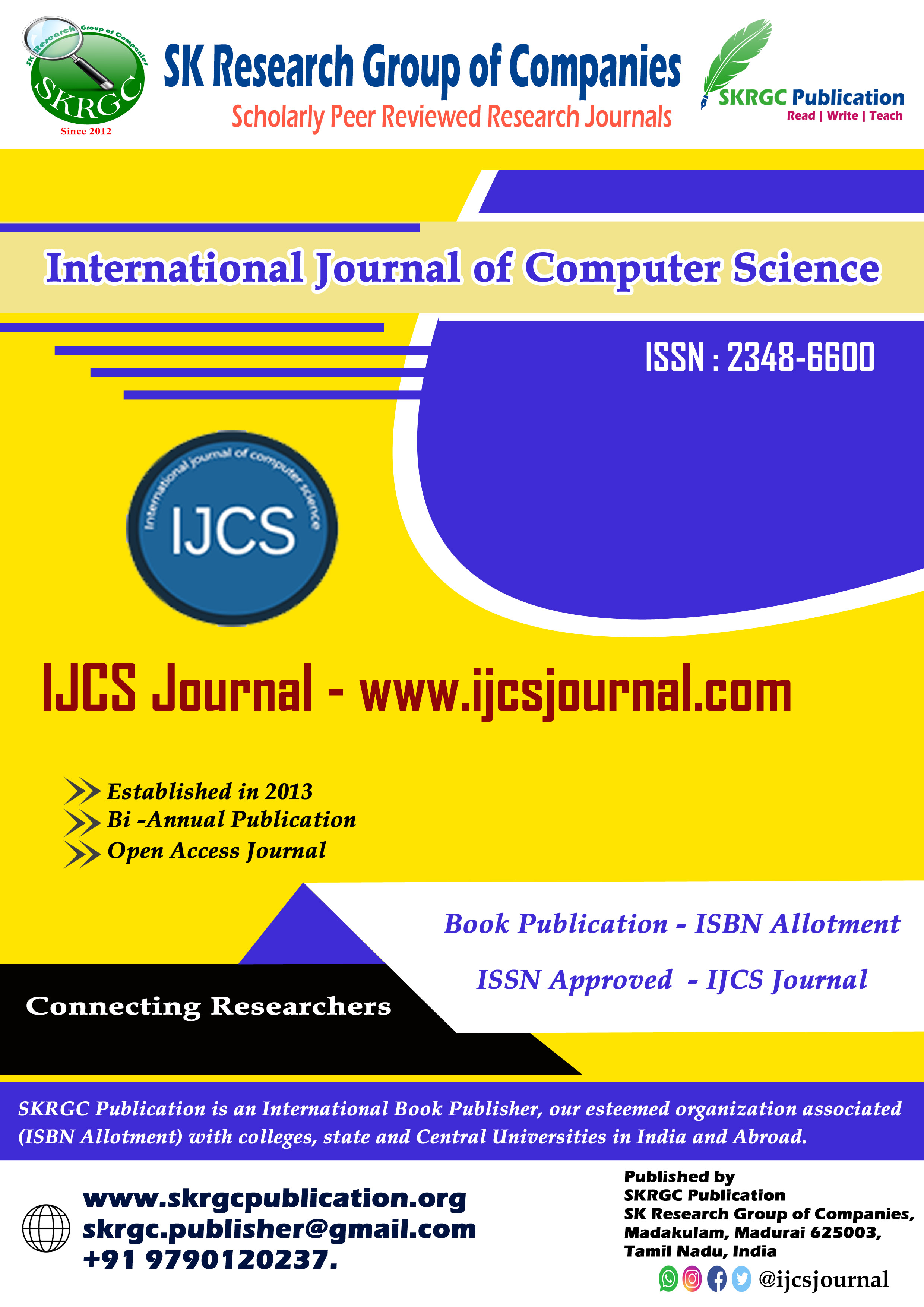The Role of Visual Image Creation in Tamil Films vis-à-vis Audience Perspective
International Journal of Computer Science (IJCS) Published by SK Research Group of Companies (SKRGC)
Download this PDF format
Abstract
The visual image creation is to modify the images shot on digitally using different techniques, tools and improve the overall quality on various parameters. The process of visual image creations is considered creative and artistic work with the attempt to remove the unwanted elements such as rotating and cropping, correcting for lens aberrations, sharpening or softening the image making the required colour changes and adding special effects for effective presentation. The procedure followed for visual image editing is not just repetitive but intense using software for editing the digital images. Since, the eye-catching visuals captivate the audience, which results in better marketing and effective reach of the audience especially when the visuals deal with people, places, and products, which the audience sought with great pride and determination. Effective audience perception can be attained if the visuals edited are planned perfective to convey the message to the audience with the goals in mind.
References
[1] Baskaran, S. T. (1991). Music for the masses: Film songs of Tamil Nadu. Economic
[2] Baskaran, S. T. (1996). The eye of the serpent: An introduction to Tamil cinema. Madras: East West Books (Madras) Pvt. Ltd.
[3] Bennett, J. (2010). Television personalities: stardom and the small screen. Routledge.
[4] Braudy, Leo. The World in a Frame: What We See in Films. Chicago: University of Chicago Press, 2002.
[5] Dickey, S. (1993). Cinema and the urban poor in South India. Cambridge University
[6] Gerritsen, R. (2016). Keeping in control: The figure of the fan in the Tamil film industry. Studies in South Asian Film & Media, 7(1-2), 5-23.
[7] Klevan, A. (2005). Film Performance: From Achievement to Appreciation (Vol. 24).
[8] M. (1970, January 01). ACHTENBLOG. Retrieved from Andronov, M. S. (1965). The Tamil language. Moscow: Nauka Publishing House.
[9] Paramesh, G (1995) Cinema, Lokashikshana Directorate, Navasakshara Pustkamale, State Resource Centre,
Department of Adult Education, Mysore, pp.6-7.
[10] Percy, J. B. (1999). Film industry and contemporary culture: a sociological analysis Press.
[11] Ramachandrappa, Baragur (2010) Globalisation and Cinema, Souvenier, Platinum Jubilee Celebrations, Karnataka Film Chamber of Commerce, Bangalore, pp.172-173.
[12] Rangachariyar, T (1928) Working Group Report on Indian Films, British Government of India, New Delhi.
Rasmussen, Dana (2010) The Resurgence of New Wave Indian Films, p.124. Athulya Books, p.118.
[13] S., Adibs. (2014). Importance of Editing. Retrieved from http://newslatefilms.com/featured/importance-editing/
[14] Thoraval, Y.V.E.S (2000) The Cinemas of India, Macmillian India Ltd, New Delhi, p.23.
www.searchenginejournal.com
www.technopedia.com
Keywords
Visual Image, Editing, Tamil Films, Audience Perception.

